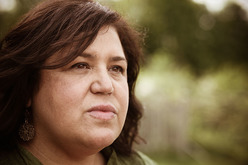|
The HHS
Office on Women’s Health (OWH) knows how important it is for you to have the latest information
on prevention and treatment to help you best serve your patients.
Each month,
we will share a curated list of tools and resources that you can immediately
put into practice.
Sexual violence has a significant and long-term physical and mental health impact on victims. Understanding the populations at risk is critical to providing patients the support they need.
A Centers for Disease Control and Prevention
(CDC) report of data
from 2010–2012 found that 1 in 3 women in the U.S. has experienced some type of
sexual violence, which is defined as “numerous violent
behaviors, including contact (e.g., forced penetration, unwanted fondling) and
non-contact (e.g., verbal harassment) acts.” There are nuances to sexual
violence reporting, however, as indicated by a more current report released by the Bureau of Justice Statistics (BJS) which found
that 1.9 per 1,000 women experienced rape/sexual assault, based on a 2016
study. The BJS acknowledges that the measurement of
rape and sexual assault presents challenges for many reasons, including
victims’ reluctance to share their experience and inconsistent definitions of
rape and sexual assault.
While
sexual violence is an important public health concern for everyone, women and
racial and ethnic minorities are most affected. In this issue, we highlight
just three of the groups facing unique challenges when it comes to sexual
violence: women veterans, Native American women, and undergraduate women.
 Military Sexual Trauma
According to recent data, about 1 in 4 women veterans has experienced military sexual trauma
(MST). MST is
the term that the U.S. Department of Veterans Affairs (VA) uses to refer to
sexual assault or repeated, threatening sexual harassment that occurred while
the veteran was in the military. To learn more about MST, programs, and services that support MST victims, and
community provider resources, visit the VA’s Military Sexual Trauma webpage and Sexual Assault Against
Females webpage.
|
 Sexual Assault Care in Tribal Communities
More than 45 percent of American Indian/Alaska Native women have
experienced some type of contact sexual violence (e.g., forced penetration, unwanted fondling) during their lifetime. For many tribal
communities, it can be difficult to develop and sustain culturally appropriate
services and resources for Native American women who have been sexually
assaulted. If you are a clinician that serves Native American women, consider
participating in Tribal Forensic Healthcare’s sexual assault web-based training to ensure you are providing appropriate care
for your patients.
|
 Sexual Assault on College Campuses
The BJS Campus Climate Survey
Validation Study recently found the prevalence rate for completed sexual
assault experienced by undergraduate females was a little over 10 percent.
Prevention efforts and increased awareness of sexual assault are key to
ultimately decreasing rates of sexual violence on college campuses. If you
serve college women as a physician or community health provider, or through
your involvement with a student health center, there are several ways you can
support patients who have experienced or may experience sexual assault:
-
Review the CDC’s National Center for
Injury Prevention and Control’s Sexual
Violence on Campus: Strategies for Prevention guide to understand the
strategies needed at the societal, community, and relationship levels to
prevent sexual violence.
-
Consider surveying health practices at
your university by participating in the nationally recognized National
College Health Assessment,
which covers a wide variety of topics including relationship difficulties,
sexual behaviors, preventive health practices, perceptions of drug and
alcohol use, to help raise awareness and address sexual assault on your
college campus.
|
For Your Patients
Encourage your patients to engage with the following resources on sexual
assault:
For more updates on women’s health, follow OWH on Twitter.
|